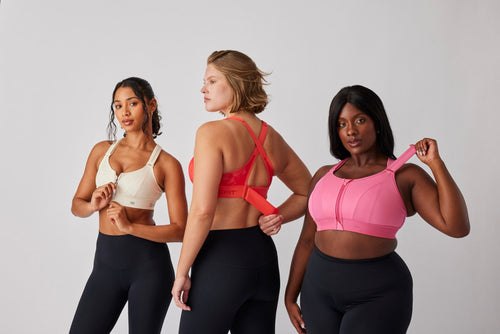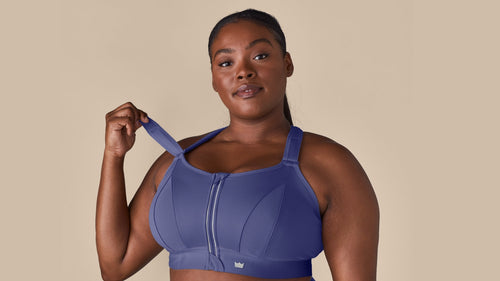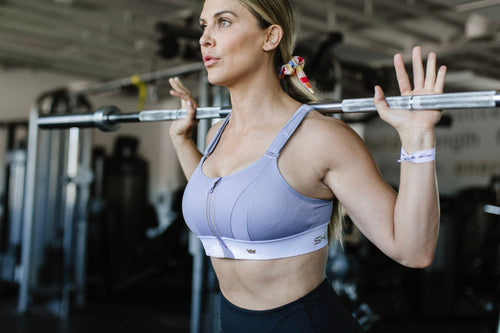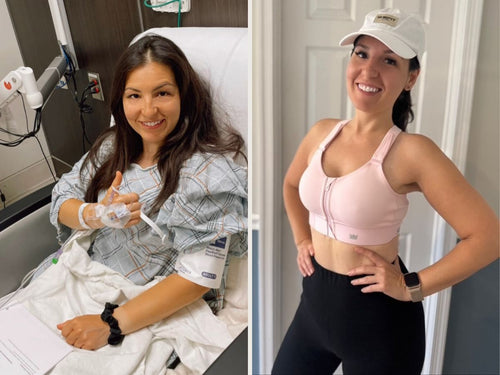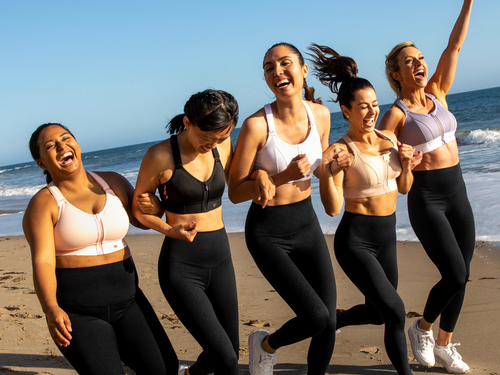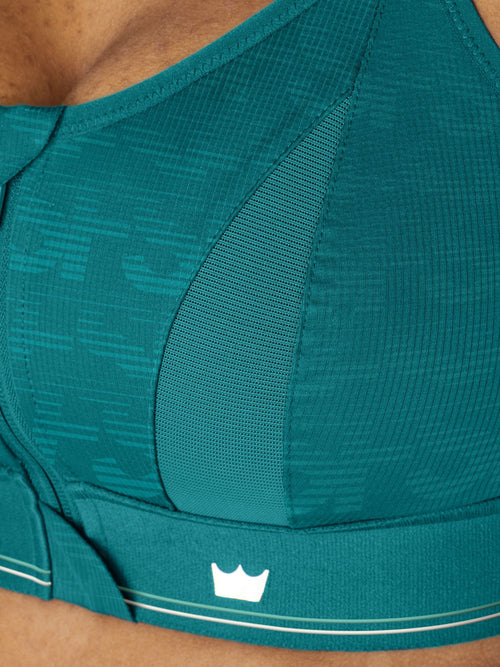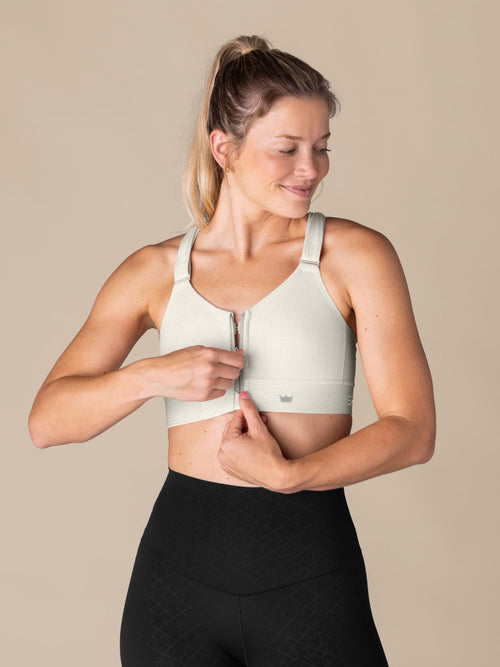New Year Sale 20% Off Shop Now
How Often Should A Beginner Do Pilates?
If you're new to Pilates, you've probably noticed the instant boost to your physical and mental well-being. This can make it extremely tempting to do Pilates workouts more and more frequently. However, there’s a sweet spot between doing too much Pilates and not enough.
Beginners should do 1 to 3 Pilates workouts per week to see results. Research shows improvements in balance, strength, and pain reduction with one to three Pilates sessions per week. Two days per week is better than one, and three is better than two, but beyond that, there’s not much benefit.
Even though you won't have a barbell or dumbbell in your hands, Pilates is considered a form of resistance training that taxes your muscles, so resting is important. Keep reading to learn what makes this form of exercise perfect for anyone, and how you can start your Pilates journey today, from the comfort of home.
Why Is Pilates Good for A Beginner?
Pilates is a great form of exercise for beginners and the physically fit alike, since the intensity of Pilates can be easily modified. Consisting of low-impact exercise and stretching, it's ideally suited for individuals just beginning their fitness journey or those undergoing rehabilitation from injury or surgery.
Just because Pilates is a safe form of exercise (low risk of injury), that doesn't mean it sacrifices benefits. Quite the contrary.
3 Unique Benefits Pilates Beginners Should Know
Pilates helps improve posture, balance, flexibility, and strength. These are all fantastic reasons for anyone to take up Pilates, but there are three unique benefits of Pilates that make it truly appealing to anyone's fitness program. Let's look at all three in detail.
1. Pilates Improves Quality of Life
Women who aren’t on a fitness plan see a boost in their quality of life when they begin Pilates training, according to a study published in The Journal of Sports Medicine and Physical Fitness. Half of the women in the study did Pilates twice per week for 8 weeks. The other half continued to be inactive.
By the end of the 8 weeks, women who participated in Pilates twice per week had better endurance, could walk further, and reported a higher quality of life.
Keep in mind that these improvements required only 2 sessions per week for 8 weeks. That’s right, 16 sessions total to see results!
2. Pilates Boosts Your Immune System
If you find yourself frequently getting sick, particularly in the winter months, Pilates can help. Researchers from Brazil asked a group of physical education students to participate in Pilates training and measured the effect it had on their immune systems.
The researchers found that after 8 weeks the women who performed Pilates had better immune function than those who didn’t. There were other medical benefits to Pilates as well, such as reduced depression and anxiety, as well as the effects that the menstrual phase had on their mental health.
3. Pilates Reduces Back Pain
Many people who begin Pilates are looking for ways to reduce pain. Perhaps their doctor suggested trying Pilates as a way to strengthen their core muscles, or because it improves posture and flexibility.
For someone who may have lower back pain, it’s hard to start a workout program.
If that sounds like you, you might have some anxiety that exercise will cause more pain, particularly if you’re lifting weights or running.
Pilates is the perfect solution to this since it's gentle enough to accommodate your back pain, but it’s challenging enough to strengthen your core and help you rehabilitate.
There's medical evidence that you can reduce your back pain through Pilates.
A study published in the Brazilian Journal of Physical Therapy found that people who did Pilates twice per week reduced their back pain faster than those who did it once. People who did three sessions per week had roughly the same benefit as people who did two.
Regardless of whether you did Pilates once, twice, or three times a week, the study found that all groups noticed a reduction in pain immediately after starting the Pilates program.
The researchers also note that there wasn’t a big difference between the groups in terms of how quickly the participants' pain was reduced. By the end of the study, most people were cured of their lower back pain.
If you're on the Pilates train after that, you might be wondering how to get started. Below, you'll find a custom-tailored Pilates workout for beginners to do at home.
How Do Beginners Do Pilates At Home?
Splitting Pilates workouts into roughly two groups, mat Pilates and reformer Pilates, beginners should start with mat Pilates at home. Mat Pilates requires little to no equipment, whereas reformer Pilates requires a machine, making mat Pilates far more conducive for at-home workouts.
Reformer Pilates provides better results when you have an instructor to guide you through the workout in person, so save that for a studio visit.
To do the mat Pilates workout below, all you need is your body weight - mats are optional. Let's get started.
At-Home Pilates for Beginners: 5 Exercises
This Pilates routine comes from Lesley Logan and is built specifically for at-home beginners. Try doing the following five exercises three or more times per week.
Exercise 1: Single-Leg Circles
- Step 1: Lie on your back with both legs out flat. Lift one leg up, keeping your knee straight.
- Step 2: Draw circles in the air with your elevated leg, keeping your knee straight and toes flexed.
- Step 3: Complete 10 circles in one direction, then 10 in the other.
Exercise 2: Side Kicks
- Step 1: Lie on your side with your legs straight and stacked on top of each other. You can support your head with your bottom hand.
- Step 2: Lift your top leg as high as you can without rolling your hips backward or forwards. Keep your knee straight as you lift.
- Step 3: Lower the leg back down. Repeat 10 times, then roll over and do the same thing on your other side.
Exercise 3: Single-Leg Stretch
- Step 1: Lie on your back with one leg lifted towards the ceiling and the other leg flat on the ground.
- Step 2: Lift the leg on the ground slightly so that it’s hovering over your mat. Keep both knees straight.
- Step 3: Reach up and grab the calf or ankle of the elevated leg with both hands, flexing your abs and lifting your head and shoulders off the ground as you do so.
- Step 4: Keep your head and shoulders off the ground and switch legs, dropping the higher leg and lifting the lower leg. Grab the elevated leg with both hands.
- Step 5: Repeat for 10 reps on each leg before relaxing back to the ground.
Exercise 4: Roll Up
- Step 1: Lie on your back with your arms reaching toward the ceiling.
- Step 2: Flex your abs and sit up slowly, with control.
- Step 3: As you sit up, reach your arms towards your feet. Continue to reach forwards until you feel a stretch in your hamstrings and back.
- Step 4: Lie back down slowly and with control. Repeat 10 times in total.
Exercise 5: Push-Ups
- Step 1: Start in a push-up position with your elbows and knees straight. Place your hands directly under your shoulders.
- Step 2: Keeping your spine flat and body in a straight line, lower yourself towards the ground.
- Step 3: Before you hit the ground, press back up to the top of the push-up position while keeping your body in a straight line.
Remember, Beginners Don’t Need Pilates Every Day
After learning about the benefits of Pilates and trying it for yourself, you might want to start doing it as often as possible. Resist the urge for optimal results - and don't forget you only need to go two or three times per week to see improvements. After that, there are diminishing returns.
You can even do Pilates once per week and see results if that’s all you can manage.
If you can’t make it to a studio to learn from an instructor, you can do Pilates from home, since there are so many exercises that require only the weight of your body and a comfortable surface to lie on.
Expect to see an improvement in your quality of life, strength, balance, flexibility, and even mental health when you start Pilates.


